Advantages of subsoil aeration are not widely known among the New Zealand farming community, so here in this blog we aim to spell out how subsoiling & aerating your soils can help you increase pasture dry matter yields by 28% in the right soil conditions.
Would you like to grow more grass & get higher crop yields without having to spread more fertiliser or work up your paddocks? Subsoil aeration simply removes compaction & enhances your soil structure to maximize the growth from your paddocks.
See the Rata Panerazer at work subsoiling after break feeding fodder beet
"By aerating you create soils with higher oxygen levels, more nutrients & make it easier for root growth, resulting in greener & more lush pastures"
The purpose of subsoil aeration:
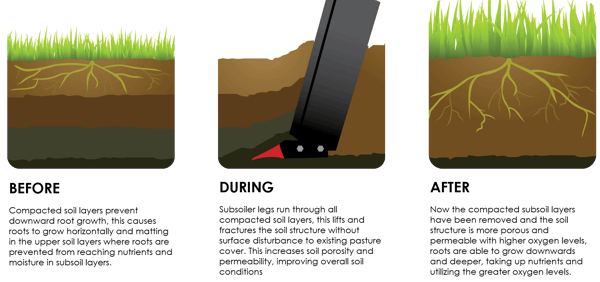
Soil compaction prevents the flow of nutrients & water to the roots of your grass & crops, leading onto lower dry matter in pasture & lower yields in crops. Subsoiling works by lifting the soil & fracturing the structure to create a looser & more 'aerated' soil that allows nutrients to flow & roots to grow.
- Eliminates Compaction: By aerating soils you remove compaction damage from pugging & machinery traffic. Aeration is particularly important in high traffic areas such as water troughs, gateways & feed out areas where comapaction levels are higher than the rest of the paddock. Aerated soils enable more vigorous & deeper root growth for healther crops & plants.
- Improved soil drainage: In the aerated soils there is also greater drainage of surplus ground water, this reduces & eliminates ponding & surface water on your paddocks, along with improved soil drainage comes a benefit of reduced runoff as the water is 'soaked' into the ground along with any nutrients that enhance growth.
- Deeper Root Structure: Soil compaction seriously hampers root growth & the depth to which roots can grow, by sub soiling the ground is broken up to provide conditions for easier root growth, this results in more vigorous & deeper root structures that take up more nutrients & provide greater resilience in dry spells & other weather events, enabling pastures & crops to 'hold on' for longer.
- Greater fertiliser uptake: When soils are compacted or do not have sufficient permeability, fertiliser is wasted. This is due to it not absorbing into the ground & simply vaporizing or washing off the surface & not into it. When soil is aerated & permeable the fertiliser absorbs into the soil & is more readily taken up by the roots.
- Greater Soil Porosity: Greater porosity of soils means the level of oxygen is increased as it flows more freely in permeable ground, this speeds up plant growth as more oxygen becomes available at root level. On the other hand compacted soils decrease oxygen levels & increases the amount of carbon dioxide in the ground, this causes an eventual slow down in growth.
- Increase in pasture growth: This is the reason why farmers aerate soils! The combined factors of subsoil aeration have been proven to increase pasture dry matter yield by 28% in the right conditions, increasing growth, production and profits.
Subsoiling & Aerating your soils can bring increases in pasture growth & crop yields of 22% over an 18 month period. Increased root growth & depth means your pastures & crops become more resilient & withstand weather & climate extremes a lot more easily.
See what Tony West has to say after using a Rata Panerazer subsoiler
How to know if you can benefit from subsoil aeration?
Any soil will benefit from sub soil aeration, the level of existing compaction will determine how much of a dramatic result you see. A test carried out by Grassland Org found that severe untreated pugging by dairy cows on a farm near Hamilton reduced ryegrass DM yield by 37% & clover DM yield by 52% over the following 12 months. Such yields reductions can be avoided by aerating & subsoiling your pastures.
High risk areas to watch for compaction:
- Break Fed Paddocks, paddocks where break feeding has occured often have high compaction rates, this is due to stock following the fence as its moved back & high concentrations of stock along this line.
- Feed Out Areas, if you have fed out in the same area or have a stationary feeder, these areas once again are at high risk of compaction as stock spend large amounts of time in these areas in concentrated numbers.
- Water Troughs, as with the above two points water troughs are areas where stock tend to congregate in concentrated numbers which causes soil compaction
- Gateways & other areas where stock pass in concentrated numbers & heavy machinery pass through are at risk of compaction
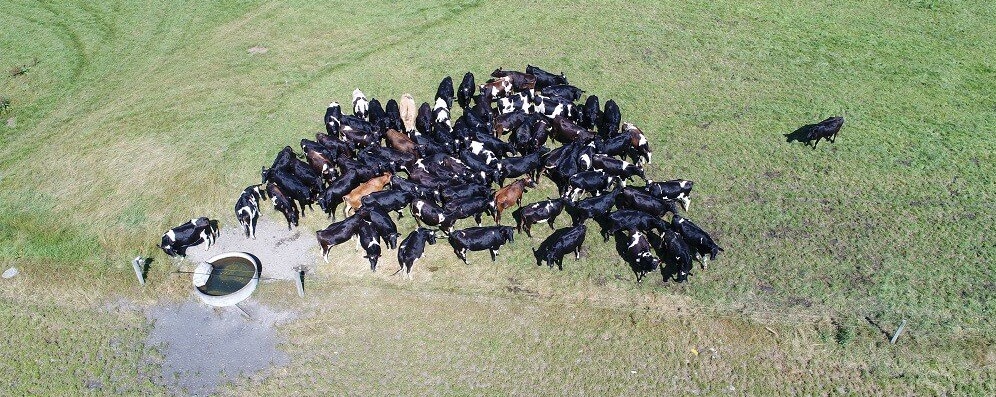
Where stock congregate in high numbers you will often find extreme soil compaction, such as around water troughs, feed out areas & gateways.
Water ponding, excess ground water & low growth areas are all signs of soil compaction problems, where any of these symptoms occur you should consider your soil aeration options.
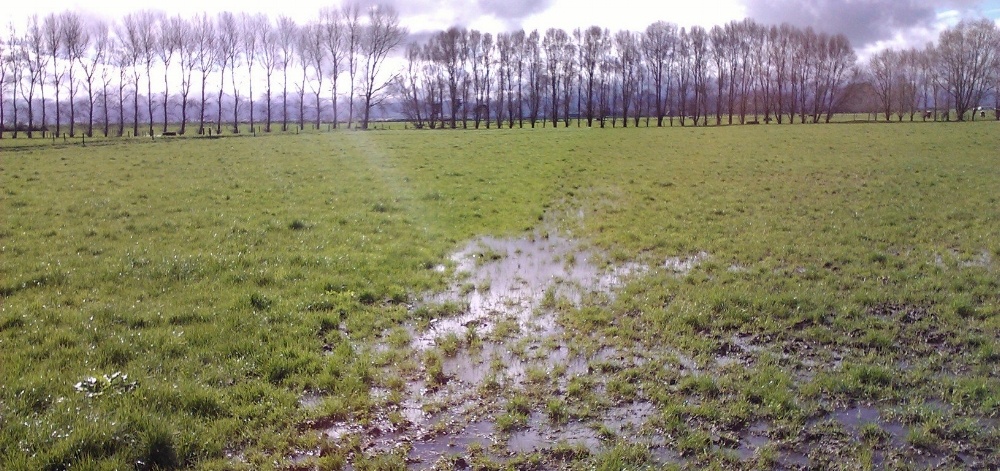
Water ponding is a sure sign of underlying compaction issues.
Rata Panerazers make the cleanest cut of any Subsoiler on the market, check out the image below to see how little disturbance there is to the pasture.
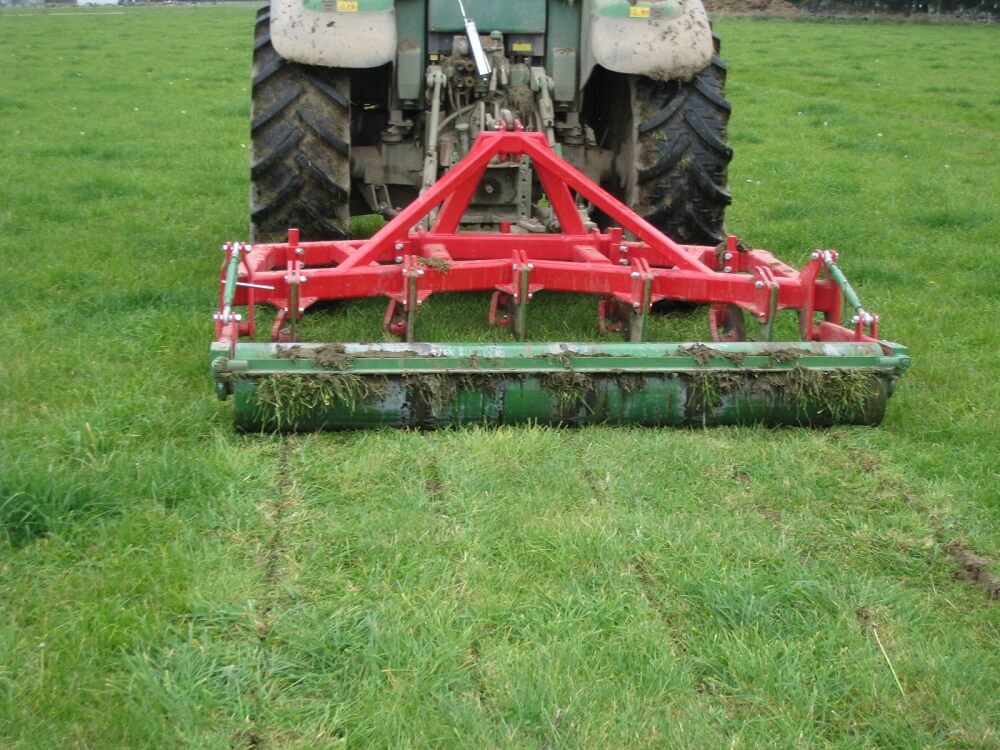
Download your complete soil aerator guide here: Download Aerator Guide
Rata Subsoil Aerators come in 3 different models:
- Conventional model for tractors up to 120hp - Check it out here
- Panerazer model for tractors over 120hp - Check it out here
- Auto Reset for tractors over 120hp in ground with a high number of obstructions - Check it out here
If your looking for a subsoiler or aerator make sure you get in touch with us to find the best machine for you.

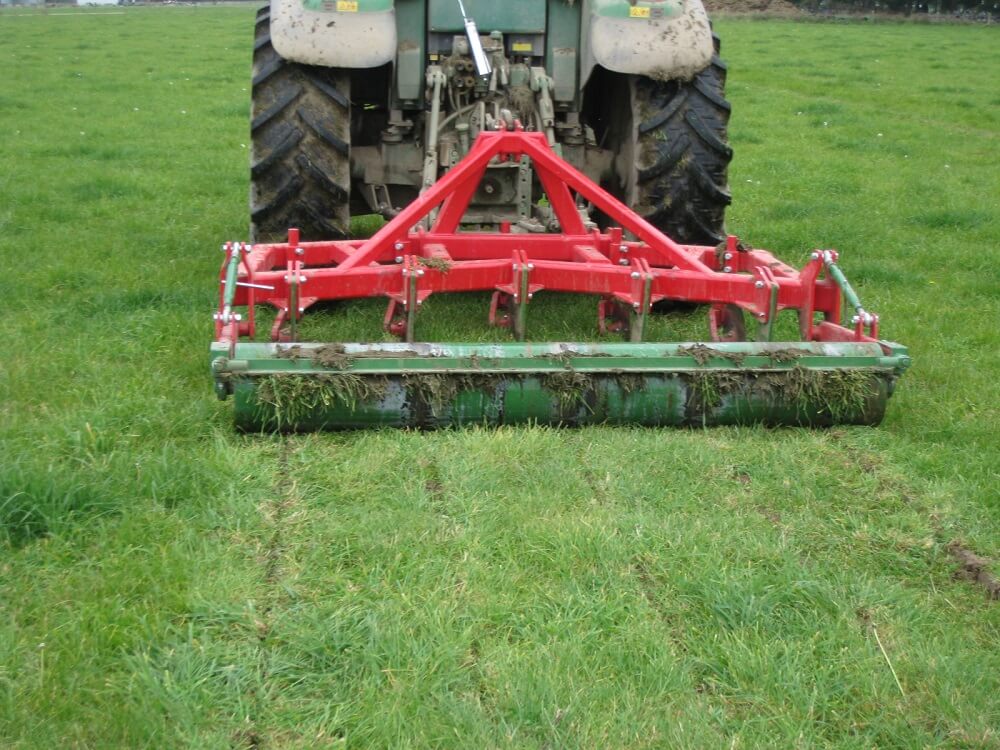

.webp)